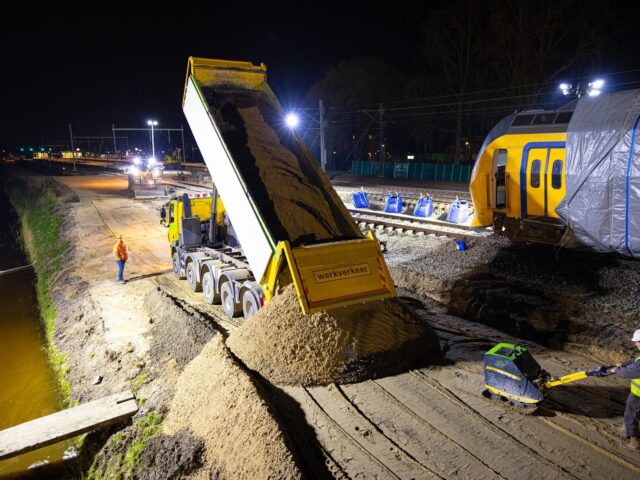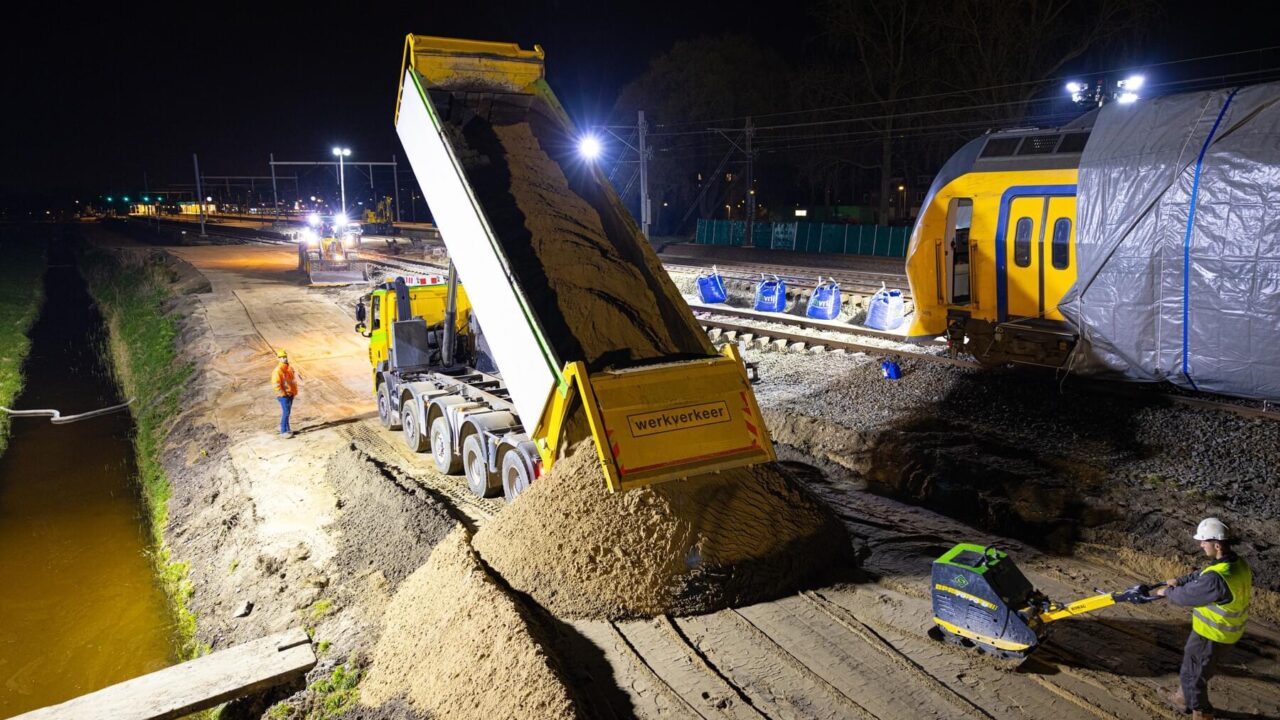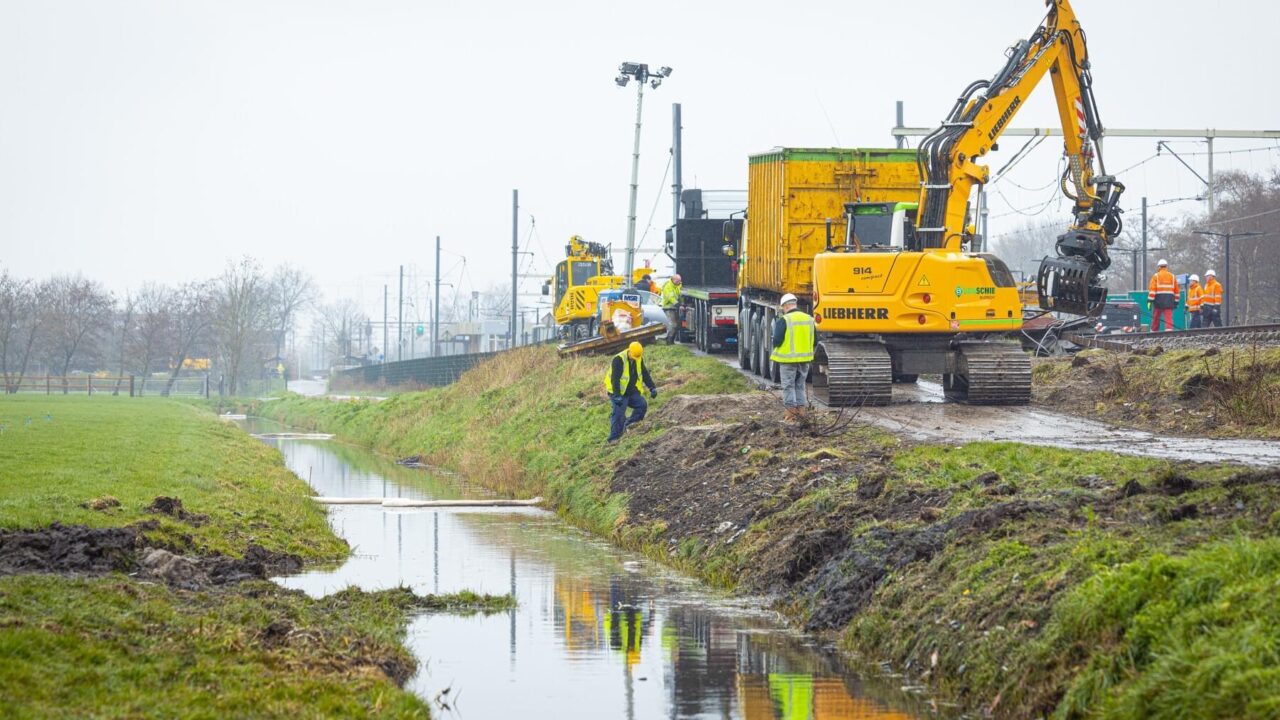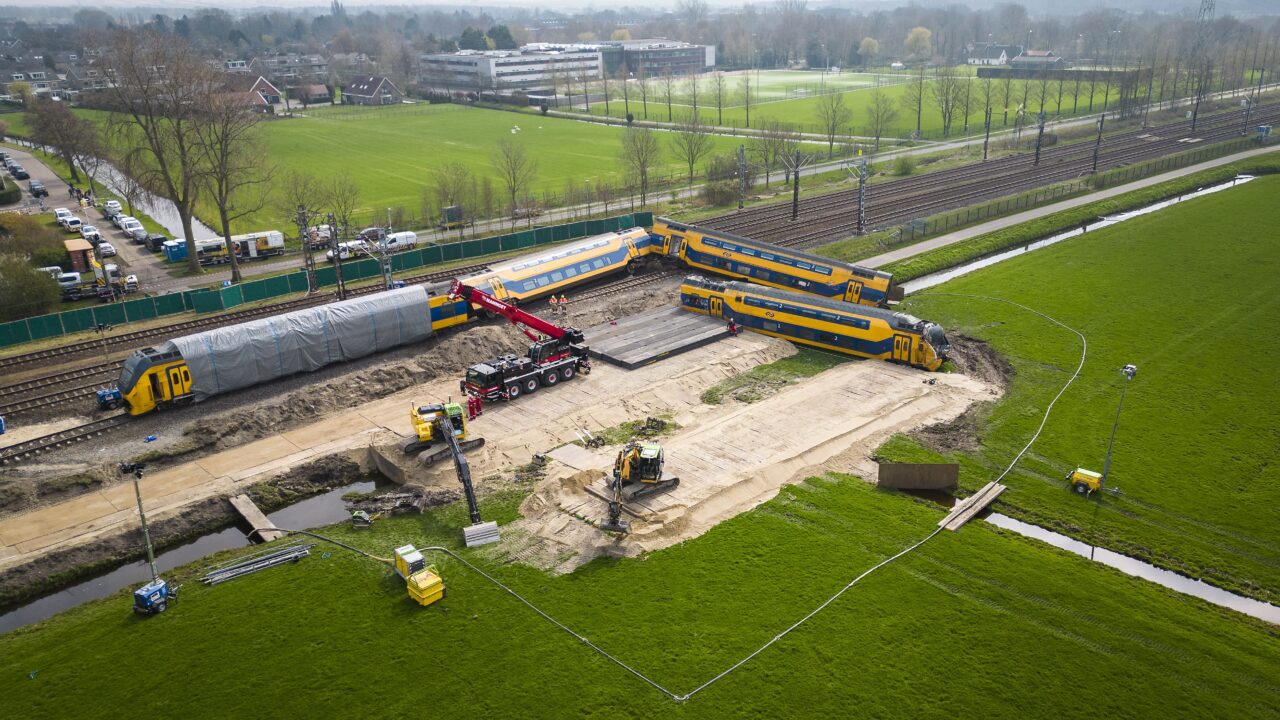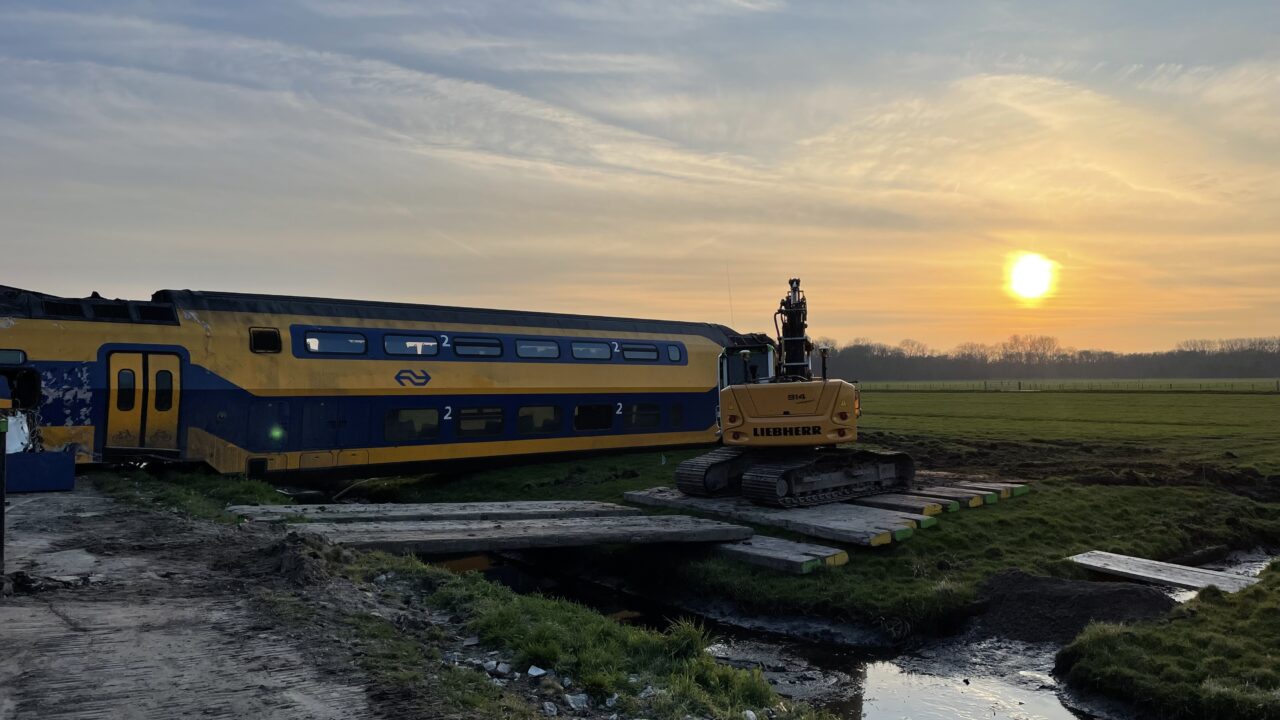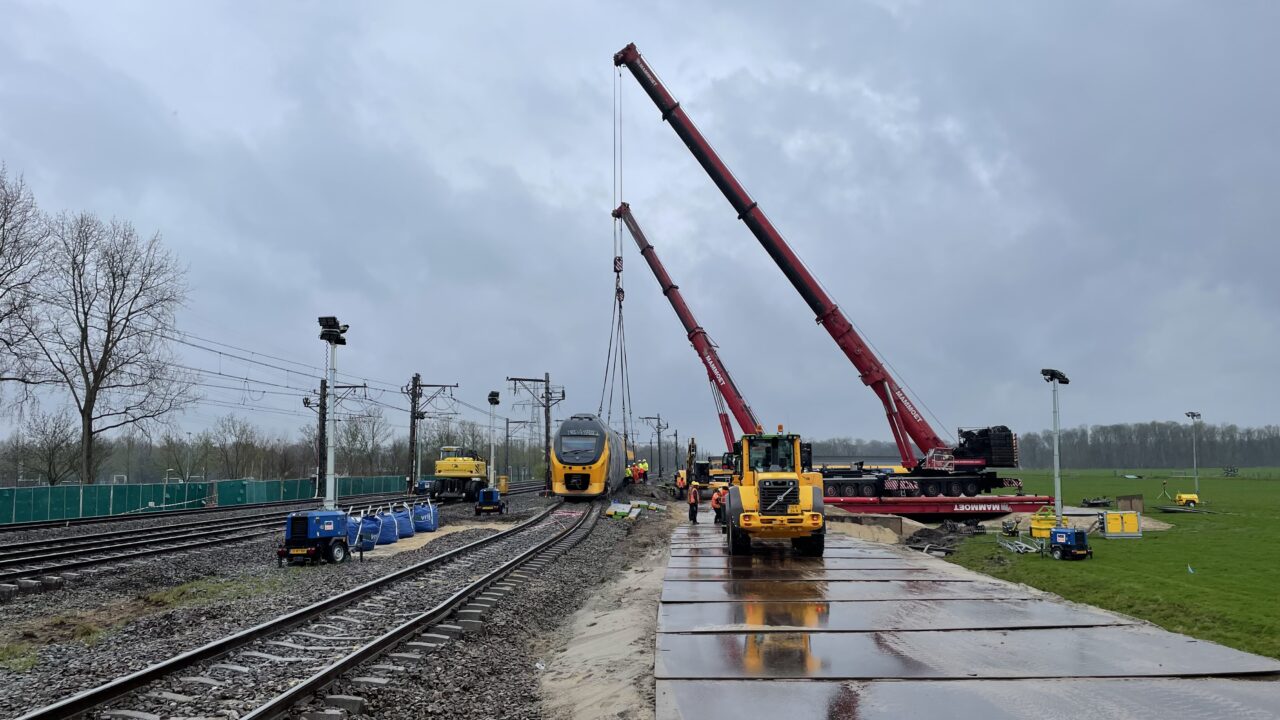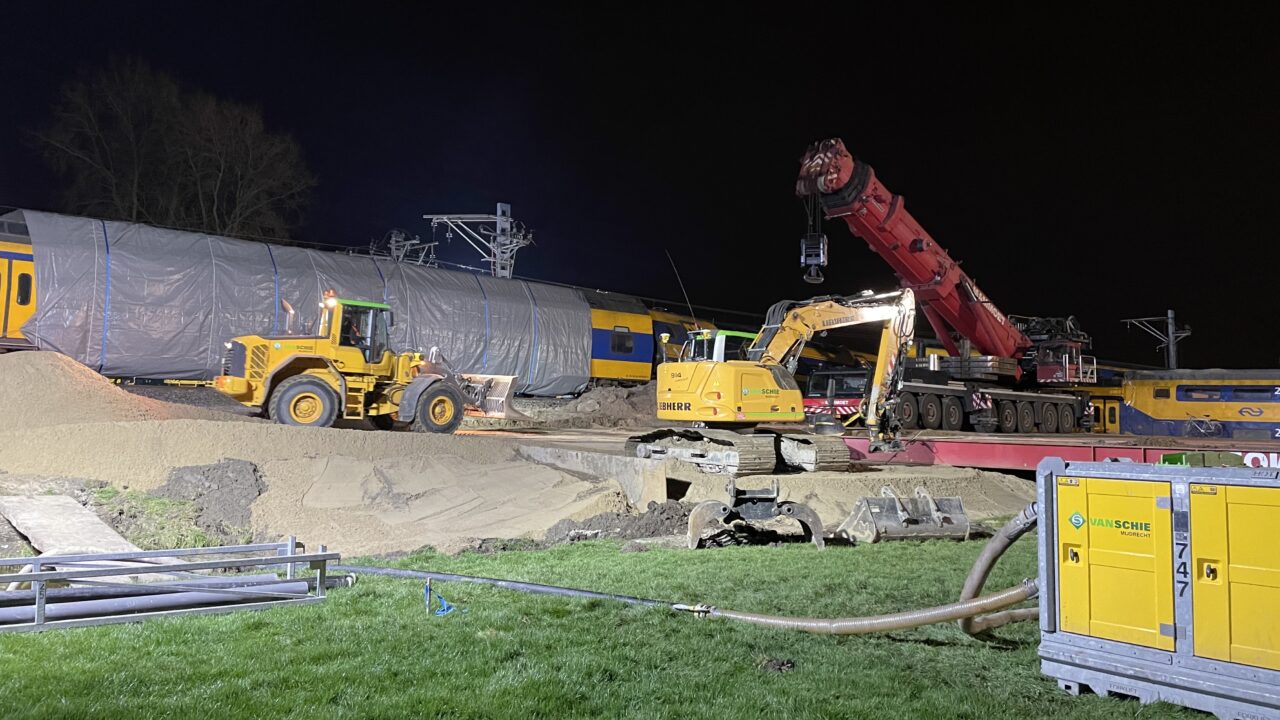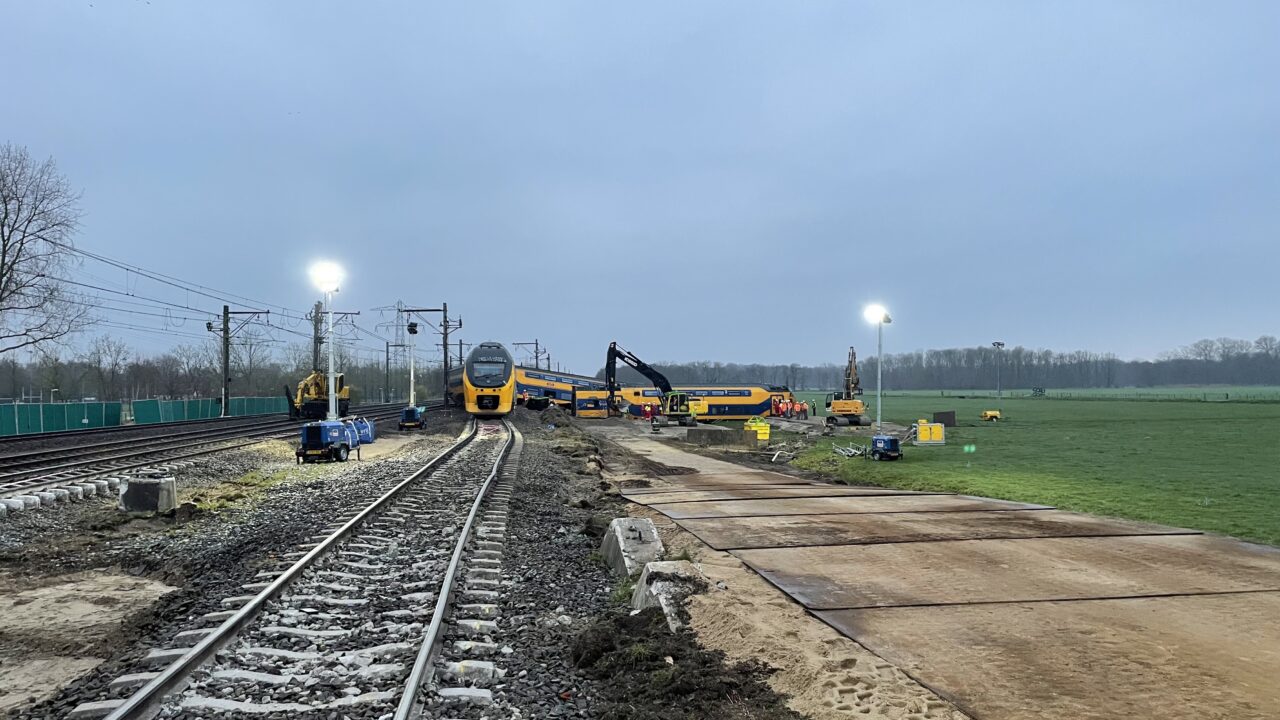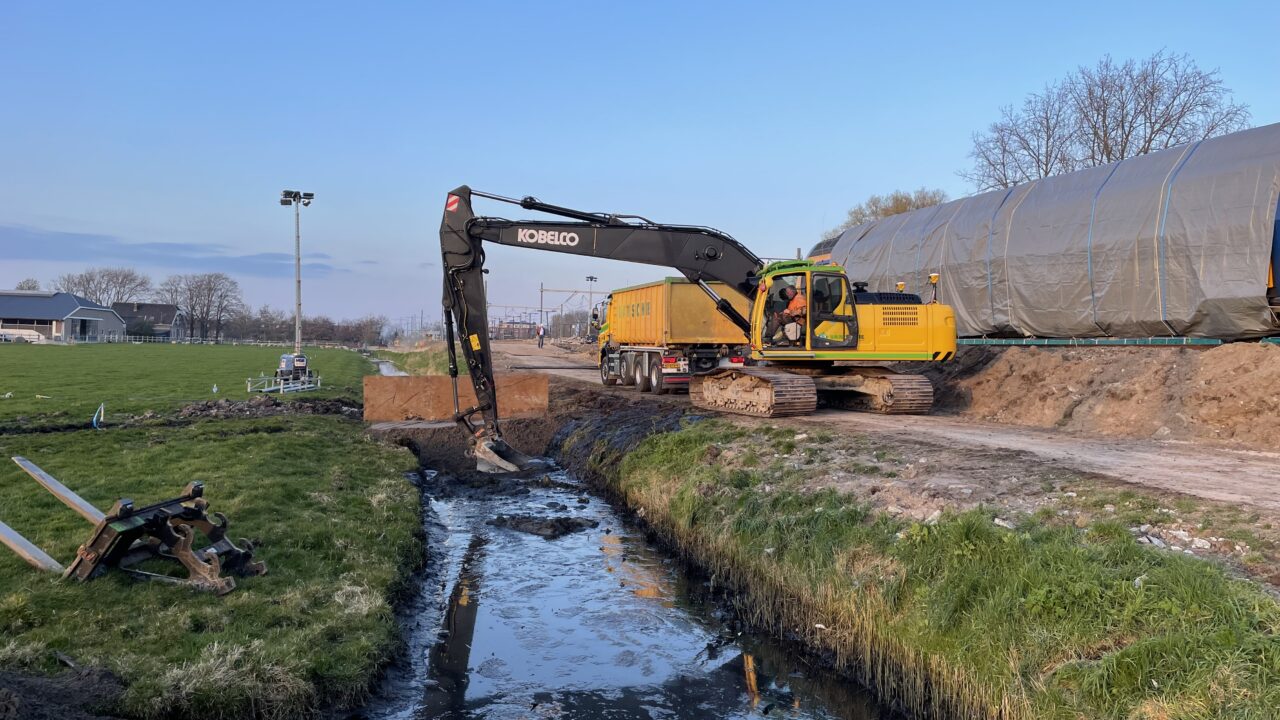The emergency services arrived on site very quickly and a plan was immediately made to evacuate the trains from the meadow. Van Schie played an important role in this.
When the experts from ProRail and the NS mapped out the situation, it quickly became clear that an incredible amount of work was needed to remove the trains from this swampy meadow. In order to reach the accident site with (very) heavy equipment, an emergency road would first have to be constructed. Because in order to lift the trains, two mobile cranes were needed: 400 tonners, both deployed by Mammoet.
But getting those cranes in the right place and setting up a stable parking area was an even bigger challenge. All disciplines from the civil engineering sector were needed here. And that is precisely why they quickly ended up with Van Schie. The company from Mijdrecht is available 24/7, has all disciplines in-house, is familiar with the soil types in the Groene Hart and is prepared for emergencies.


